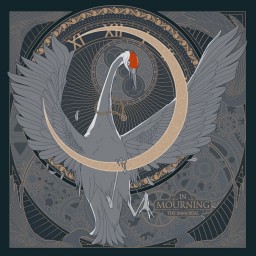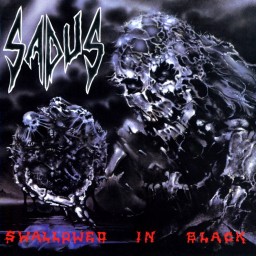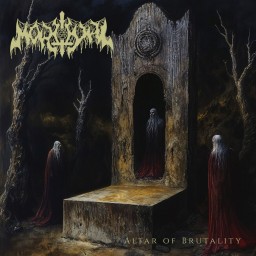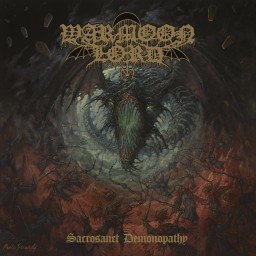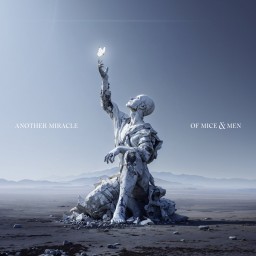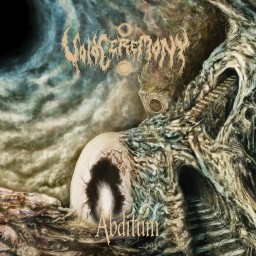Latest Reviews
Neura Bunget are a band I've always somewhat appreciated for balancing their boldness in the avant-garde department with a consistent flow. The album tight before their signature OM, named 'n crugu bradului, is known among black metal fans for pushing those boundaries, walking the tightrope until picking a love or hate side is basically unavoidable. I suppose this is the album that cemented them as an experimental band. I never really had a problem with it, personally.
When I first heard this album, I gave it a 94/100, almost matching their signature, OM, which had a 97. In fact, I would even go as far as to say the opening epic (the album is divided into four 12-13 minute epics, each numerically named in Roman) is one of the finest black metal songs I've ever heard. It's like what would happen if Rod Serling and Edgar Rice Burroughs decided to collab, and the end result was a Twilight Zone venture into the mythology of an ancient tribe. As for the other songs, they deliver some new ideas while following up on the same format as the first, also showcasing another side of them by perfectly implementing light amounts of the folk sounds of their home country, Romania, like people have been doing it for fifty years. There's one very mellow, lengthy and carefully constructed solo in the middle of III that just tugs at the back of your head, demanding that you try to go to sleep and let yourself be absorbed in the sound until you're rudely awakened by a black metal alarm blaring like a vulture. Now some of the general black metal riffs here are not the most originally compose, but the production style allows the storminess of their black metal genre to burst through the headphones while going above the Richter scale. The windiness aspect is made into a piece of wonderfully empty but chilling ambiance on IV which only allows the faint echoes of singing and guitars to bleed out, giving it personality. It drags on just a little longer than I'd like before the black metal comes back, but it was still impressive. even then, it includes alien whistling in the midsection that I honestly wanted more of.
This may come as absolutely no surprise to anyone who knows me, but IMO, 'n crugu bradului boasts a lot of brilliance in the way genres are played with among the more typical black metal riffs. This could make the album a regular for me to blast while trying to drown out noises on the outside, and maybe just because I wanna soak up some of the weirdness. Like I said in the first paragraph, when I first gave this album a spin, I gave it a 94. I think I was right.
Along with Dissection, Sacramentum is considered essential to the development of the melodic black metal subgenre. When I was first exploring the satanic side of black metal, I finally got around to trying these guys and many other classics. This album specifically was one of the 95/100's, when the other Sacramentum albums couldn't even keep up with it. Ironically, I just heard both Dissections as well as the first two releases by a more recent band called Stormkeep, and both bands blow this beloved debut album out of the water. From a genre perspective, it has more strengths than weaknesses. The epic personality matches perfectly with its production technique. Somewhat noisy yet still somehow clear, everything comes out beautifully. A collective of fine melodies and riffs rules the album front to back, never once even allowing a dull moment to enter through the gates of the castle painted on the cover. For a fan of the genre, this would be some good, easy fun, and because of its influence it remains a revered classic. But the thing is, I can't revere it the way I used to back when I was still new to black metal. I admit, this album's a good amount of fun, but I can't compare any one of these melodies, rhythms and riffs favorably to the things I heard in those two Dissection albums or those two Stormkeep albums. It's like The Aaron Carter to Dissection's Nick Carter, except still listenable. Either way, unlike the first two Dissection albums, this didn't age quite as well for me, now that we have so many emulators of the two at least being able to match and surpass this one when they usually can't do so with Dissection. ANd strangely enough, now the other albums are closer to keeping up with this on in my honest opinion.
83
Dimmu Borgir is a much more accessible black metal band than most, so they're probably a very good starting point for exploring black metal in general. In their best albums, there isn't as strong of a blackened atmosphere as most black metal albums, and their melodies are a bit poppier. But I haven't heard anyone complain about Dimmu Borgir the way metalheads have done when other bands from other extreme genres end up sounding too "poppy," and maybe this is because Dimmu Borgir maintains a dense sound loaded with gothic energy and textures. I've even heard that they're one of the highest selling black metal bands in the world.
While the symphonic / melodic / gothic combo prominent in Enthrone Darkness Triumphant is maintained as a constant with minimal variation through the album, the accessibility of the album is lived up to due to the melodic strengths and clever production. There isn't a single part of it that's not balanced perfectly between catchiness and darkness. This was different from a much more revered symphonic black album, Emperor's Anthems to the Welkins at Dusk, in the sense that it was more about having fun than it was about developing a style. And they had done that beautifully, keeping things entertaining and somewhat mystical along the way. While riffs and extreme technicalities are absent, overall, the catchiness and mystical vibes are almost addicting. And since the songs are typically between 4 and 6 minutes, it's a miracle than none of them feel too long because they kept on delivering various kinds of catchy and mystical ideas as opposed to be guitar wankers.
I suppose many imitators these days may end up beating this album at its own game with some extra creativity, and part of the reason I'm such an Emperor fan is because of what was done on Welkins. But I won't deny that every time I hear this album, which is rare, I have fun with it. They make it easy to get invested in the mystical moods without drawing away from black metal tremelo textures. The two go together perfectly on this album, and in my opinion, an excellent sense of melody definitely justified the fanbase, historical status and the high sales for a black metal album.
90
I haven't heard the first two Deathspell Omega albums yet, and I heard they were actually kinda mediocre. That's not gonna stop me from checking them out at some point, but as far as their best stuff goes, Si Monumentum is the album that put them on the map. Helping to popularize Orthodox Satanism in black metal, revitalizing a topic that was becoming cheesy and unoriginal, they created a repetitive yet complex take on black metal that's just as scary as it is intriguing. With the right headphones, this production style makes the blackened guitars sound like a freaking tornado. The title track will even say all of that. It's like their are constant specks of dirty flying against your window. If you could drive into an album the way you do on the road, you would NOT want to drive into this. It'll turn you upside down the way it'll do to your mind and soul. And it maintains this ride throughout. However, at 77 minutes, I would say this is a bit much, since the band was able to prove its point time and time again across the first 40 minutes alone. Still, if the first two albums are considered mediocre by the masses, then Deathspell Omega's tertiary effort is a step forward not only for the band, but for black metal in general. Easily an important album worth exploring.
87
What can be said about Mental Funeral that hasn't being said? Truly a foundational pillar of death metal, specially of the doomy variety, and it doesn't disappoint. I do prefer the sludgier and rawer debut, but this is undeniably some disgusting and skull-crushing death doom, with tons of memorable riffs that can't be ignored.
Heretoir are a German atmospheric black metal band that have been around for a surprisingly long time. I had never heard of them prior to being introduced to them late in 2025 and their new record, Solastalgia. And the only reason I gave it my attention at this point in the year is because I was told it was right up my alley in the style of black metal that I typically enjoy. Well, that friend was right because Solastalgia is like a modern day love letter to Agalloch's Ashes Against the Grain.
Now I do need to choose my words very carefully from here on out, because Ashes Against the Grain might be one of my favourite albums of all time. And Solastalgia does more than enough to separate itself from Agalloch. In fact, the main reason why I enjoy Solastalgia so much is because of how much it shares in common with a band like Svalbard. This is huge sounding atmospheric black metal, but with a hip, metalcore front. The promotional single "You Are the Night" and "Burial" are far less in common with Agalloch, but no doubt matching in instrumental beauty. The acoustic passages on "Seasons of Grief", the piano bridge on "Inertia" and the earthly tonal center of "The Heart of December" are undoubtedly Agalloch in presentation.
Perhaps it is ironic then that Heretoir named their album Solastalgia. A word whose etymology is a portmanteau of the words "solace" and "nostalgia". Nostalgia is a word typically associated with positive thoughts and emotions, whereas Solastalgia is the antithesis; where the places and people that you once knew and grew up with have all changed and have become affected by the passage of time. As such, it is less surprising that Heretoir are developing the sound of Agalloch to places that band could have never gone. And with this bands roots in depressive suicidal black metal, the grief and distress felt within the music and lyrics hits with its meta commentary that I never expecting out of a black metal album! Although, if I'm being nitpicky, a few of the lyrical choices to feel quite cliche and could have been written by nearly anyone.
Despite all my praise for the instrumentals so far, I do have to mention the obtuseness in the percussion. I think that it sounds fine and it's performed with an extreme level of precision, I just feel like the drums are mixed way too close to the front. At the beginning of "Dreamgatherer" it begins with a pleasant clean guitar with reverb and before you know it, the percussion is playing on top of you and the guitar melody has nowhere to go. It also becomes rather intrusive during blast beats like the bridge of "Solastalgia" among others.
All told though, I really enjoyed Solastalgia. The band really captured the essence of the word here; an album that has aspirations of Agalloch, brought into the modern age with metalcore and blackgaze textures. It will be a struggle for those who just want to enjoy Agalloch, but if you're willing to come to terms with Agalloch not coming back (and Ashes Against the Grain being nearly two decades old), then I can assure you that this album is a clinic in modern day post-black metal.
Best Songs: The Ashen Falls, You Are the Night, Dreamgatherer, Solastalgia, Inertia
I believe this is the third time I've heard this album. I've given several Drudkh albums high marks as I was less experienced in atmo-black, and loved the production and the autumn vibes. I don't feel like I forced myself to enjoy them, but now that I've heard more than enough metal for a couple lifetimes, going back to this album, I can see why people like it... but not why people love it. The album's music is basically the equivalent of a musical white noise machine. There's excellent percussions that are light, speedy and creative, backing up every perfectly produced piece of atmosphere. Slow melodies can be hypnotic if you just want some slow melodies to send you into a state of total calm. Drudkh is one of those bands that can make perfect examples of total calm with extreme metal last 40 minutes on end. But as a guy who craves creativity, suffice it to say, while this album feels like it would be good for the brain and soul, nine minutes without changing pace, especially when all forty minutes of the album do this, doesn't necessarily say great things. The band is good at this one thing that they can do, but now I don't feel any need to go back to this ever again if I want something calming yet more inventive. Still, no fear factor, total atmosphere and an almost heavenly sound make this stand out amongst others who try the same thing, at least vibe and production-wise.
75
I can't say I'm really a fan of Atheist. Piece of Time was a kind of a let down to me: I can see them being ahead of their time in complexity and technicality, but the band just sounds so convoluted and seems to trample over itself to the point that I don't really enjoy the album very much. This release on the other hand, is a whole other beast! The band sounds somewhat lighter, with a clearer production and better execution, particularly on the vocals, which sound way more on point. Composition wise, they really went through the roof, leaning very heavily on their jazz influences to make what sounds pretty much 50-50 death thrash and jazz fusion. This was very much the correct decision, as this is where the band's insane musicianship and chaotic nature really gets to shine it's brightest, the result being some of the most interesting metal releases I've ever heard, perfectly balancing awesome complexity, sheer heaviness and plain fun. Honestly, not a single bad minute on this, absolutely incredible record.
Leviathan is one of the forerunners of the more emotional brand of black metal. He has an almost unmatched ability to create sonic textures that leave you haunted, angry or crying. This is most artistically present in his side project, Lurker of Chalice. Not sure why he chose a different name, as I imagine that's not great marketing (maybe I'm naive about that), but the album still ended up being a staple in modern day atmo-black metal. I ignored it for a while because I didn't realize it was a Leviathan project until only a few months ago. Kickstarting my new List Challenge on Metal Academy, I figured this diversified work would be a good starting point, and it really was. Songs are drenched in atmosphere, flawless and even elegantly disturbing soundscapes that are more shift in atmospheres than compositional melodies. This is one of those albums that shouldn't, and I mean SHOULD NOT, build itself on melody, and I'm addicted to melody. There are moments that are doomy and sorrowful, noisy and disturbing, beautiful and slightly melodic, all organized to put you through an alternate would where pain lies on every road and you're smackdab in the intersection, where the forks in the road stab you and feed you to the wolves. There are a million different ways for the album to do this, and on most occasions it justifies absurd lengths, such as the ten minute This Blood Falls as Mortal Pt. 3. Ironically, I found the first song, Piercing Where They Might, to be a bit too repetitive, even at six minutes. The rest of the album is largely perfect. I had a feeling this would end up being my pick for the best Leviathan release, and I was right.
98
I'm not very well versed in Abigor, but since I'll be joining Metal Academy's North Clan soon, it's time for me to get started on a North List Challenge. But first, before I handle the 2nd Decade Challenge, I'll celebrate with some classic black metal from Abigor. I'm familiar with their debut album and thought it was quite good, but nothing special. This is special, in a million ways. There's a cinematic approach which allows the band to maximize their abilities. Flawless production and mixing allows the full extent of their black metal prowess to bleed through like a big gash in the gut. Not only is the balance between black metal speed and proper compositions perfected, allowing the band to constantly surprise every half a minute without breaking the essence of any song or the album itself, but the crystal production allows that second layer in the background to be heard quietly but clearly. It would be nice to see them diversify their ideas more, but at least we have some brilliant playing and clever layering to back it all up. To be honest, the first couple songs astounded me, but it felt less original as it went along. Still, I'm happy to get through yet another classic in the traditional black metal scene, and I'll definitely check out more Abigor albums later on.
93
I've been very busy with metal today. And I am two albums away from completing my third List Challenge on Metal Academy: it all ends with Razor's Violent Restitution. Now the first two Razor albums (heard them both with a replay of The Years of Decay in between) were good thrash exercises with properly noisy production, but neither one was able to impress me on the technical side other than featuring the band being self-aware enough not to go into overdone six-to-eight-minute territory. So they were pretty good, but that's about it. This album's different. The three-minute intro makes a point of going the extra mile in aggression while giving us some much weirder solos and more unpredictability by going even faster than ever. When they pull the buzzsaw out, it might as well be replacing the guitarists and you'd barely notice. That kind of revelation gave me a similar feeling as Todd Rundgren's motorcycle-style guitar solo in Bat Out of Hell. That same song, named Taste the Floor, boasts a number of wild decisions and twists in its two-minute runtime. That's the album these guys made. Of course, since many of these songs are between 2 and 3 minutes, it's safe to assume that many of these songs have the same basic goal: be a buzzsaw, a hyperactive and indomitable exercise in the thrash energy and production that defined them. Rarely does the album take any time to slow down, with the best example being Edge of the Razor, the longest track on the album (4 minutes 15 seconds). But a dozen songs of the same formula can still get tiring, so by the end, it becomes obvious that this album should never even have been 40 minutes.
So this is easily the most fun Razor album out of the three I've heard, and like many other thrash albums, the reason for its status as an essential is because it manages to be so freakin' heavily and pull it off. But there's not a lot of originality among the excitement and riffs, so that's enough to knock off a full star from a perfect rating for me.
80
Overkill's always been a fun band before anything else, and back when I was first exploring the thrash scene many years ago as a total noob to metal, these guys were one of the major players. But I rarely return to their albums now because of so many other ventures and the fear that I was neglecting other genres for metal, just like when I neglected too many other movie genres for horror. So now that I'm back on metal for the time being, this is the perfect time to go over this.
Now once again, these guys are fun, a lot of fun. Because they focus so much on songwriting and twists and turns each song, it's easy to see why this album became a staple for the band and the thrash fans. The production is their clearest so far. They've earned it after an impressive catalogue beforehand. Of course, it started out with a couple of little problems, despite being a lot of fun. First of all, the album's all about shifting places, but song of these songs are sharing some of the same ideas and twists. It doesn't help that they share the same tempo as well. Nothing super-surprising happens until the guitar solo to Nothing to Die for. As well, despite perfectly clear production, this also makes the album feel a little empty in the background, like the album's missing another layer that should never have been neglected or removed. This also allows for some songs to become overlong. I mean, 56 minutes can easily be too much in a genre where one of the four leading icon albums of said scene is literally half that length. And I'm talking about Reign in Blood, with the others being Ride the Lightning, Master of Puppets and Rust in Peace (forget Anthrax for me, will ya?)
But the album has a good deal of creativity and shows much more effort in this vein than with previous works, even if I may call those previous works better for doing a much more impressive job with the elements they had than this album does. The Sabbathian rhythm to Playing With Spiders was totally unexpected but very much apprciated. Hell, the singer's iconic voice is just PERFECT for this. He's basically a thrash variant to Bon Scott, but a better singer overall, so pairing this with doom metal was a good move. On top of which, how often do we even get thrash bands that venture into doom metal? Can we just take a moment appreciate the fact that an iconic thrash band with an already good set of albums decided to take this turn and pull it off?
...
...
Thank you for enjoying that moment with me.
This might not be their most well-fleshed out album, but it's good to see that they were trying out some new tricks. Overkill rarely ever does a bad album because they always have spirit and the willingness to branch out behind them, and ironically, The Years of Decay seems to be the perfect album to fully describe their personality.
88
You'd think a leading influence in the world of crossover thrash would've lasted longere than 2 studio albums, especially considering how popular the combination of hardcore punk and thrash metal got in the thrash scene. Slayer and Voivod were both rocking the influence, even if they rarely ever reached the blatancy of S.O.D. Now this album is made up of nearly 20 similar songs, all going for the same basic goal: combine the two genres and complain about the things punk rockers complain about. This leaves little room for guitar solos and is mostly built for the explosion of quick songs built to cater to the youth growing tired of modern politics and authority. But there are a number of strengths that need to be considered here. First of all, for a thrash debut, the production is practically FLAWLESS. No demo-style noise which is extremely common for thrash debuts, not studio saturation of any kind. It's pure, simple punk, through and through. As well, these guys are excellent at the one thing they do: thrash punk traditions as hard as they can. And the lyrics might be to the point, but they embody the multiple facets of the punk spirit perfectly, even when they're going into the comedy of it all. This isn't a perfect album in terms of the art, but it's a perfectly punk album, so it's essential both punk and thrash.
86
With the band having expanded their sound into more artistic territory on their second album, Dreamweaver, further emphasis on that was placed on their third, which was ironically the last thing they ever produced. Now there seems to be a kind of alienation that the fans felt, which would explain a collective of negative reviews on the internet. This alienation likely stems from the further forays into standard heavy metal, ballads and prog metal. As well, there's a new vocalist with a stronger melodic voice rather than the raspy thrash voice everyone who knows the band is familiar with. Personally, I don't think this is much of a problem. This new singer seems to fit the more dramatic side of the music that the band was going for. On top of that, the majority of this music is actually pretty good, sometimes flat out banging. These guys really pushed themselves in the creativity department, but never once make the album feel inconsistent or messy. But be prepared for a very different kind of album, this more melodic, focused and versatile album just doesn't sound like the original Sabbat at all. Having said that, they pushed that specific sound as far as it could go without breaking new territory, so an album like this was gonna happen eventually.
73
Afte having seen some pretty positive reviews for English ban Sabbat's debut album, I was quite disappointed with how monotone and one-track-minded it got overtime. I was wondering if the fans were largely just attributed to genre fans as opposed to more explorative music buffs. Now I may be a thrash fan, but I demand ART. There's a noteworthy amount of that in this album, at least in comparison to the debut. The Clerical Conspiracy, the track following the intro, boasts an almost blackened level of heaviness and production in the riffs. Next even comes a soft folk track which lasts two minutes. This is what I'm talking about when I want an album to be less monotone. There's a little more creativity in the lyrics as well, on top of some prog metal aspects, which help justify this album's two eight-minute tracks, making them feel shorter than they really were, which in itself is a major strength since the band couldn't even justify the one eight-minute epic on their debut. However, while the album is certainly wilder, most of it still sounds the same, though much more impressively so. In fact, I couldn't even consider the last song before the one-minute outro, Mythistory, a proper send-off, because it sounded too much like other tracks, proggy aspects and all. So this is obviously a good effort with some great moments, but while it's more creative, it carries a couple of the same basic flaws as the first.
81
After checking out English thrash band Sabbat's two early demos, I went straight into the debut. I expected a fun but standard-sounding thrash band, as was the norm of the time, and for the most part. But I honestly have to say that I'm not terribly impressed with this overall. The writing quality, production quality and the overall atmosphere are a little better than the usual thrash debut album I came across for the thrash challenge on Metal Academy. Destruction was generic and underproduced for several albums, for example. This has PROPER production. Not perfect, but proper and largely clear with only a faint hint of noise factor. The album's overall vibe and essence is fun fodder for the thrash junkie. The technicality isn't that extreme, and largely done before, but it showcases all the skills that the demos showed off but were unfortunately tarnished by demo quality audio, and almost completely drowned by the first. The eight-minute epic, Horned Is the Hunter, pretty much drags through standard thrash behavior without any sense of branching out. Eventually it got so samey, monotone and standard that I was losing interest. I finished it, though. Overall, this debut is decent but passable.
67
I knew within the first few moments of "12/23/93" that I was going to get along just fine with Poison the Well's debut record from 1999, The Opposite of December...A Season of Separation. It is exactly the kind of post-hardcore/emo infused metalcore that came out of the late 1990s with acts like Hopesfall and Skycamefalling that I really love. The rawness of these recording is really noticeable with how punchy a lot of the breakdowns are. Poison the Well have done excellent work with cutting out the fat that becomes commonplace in many a post-punk and post-hardcore band around the turn of the millennium. The vocals are relentless in their genuine anxiety and passion, almost as if the vocalist screams are about to break down into wails at any moment. But as a counterpoint, the catchiness of the guitar riffs alongside some of those repetitive vocal lines just pushes this record above the rest. It is a wonderful blend of metalcore intensity alongside post-hardcore's more progressive songwriting.
Best Songs: A Wish For Wings That Work, Slice Paper Wrists, Nerdy, Mid Air Love Message, My Mirror No Longer Reflects
I have only really been interested in drone metal for about a decade now and only started exploring it in earnest two or three years ago, but it has become one of my favourite genres and a lot of my highest scores of recent times have gone to drone metal releases. I guess that because I am quite an anxious person by nature, I find the monolithic droning of this style of metal to be inherently calming. Bong are a new name to me, despite them having been around for close to twenty years now and hailing from these British Isles I call home. They are prolific releasers of material with nine studio albums, a plethora of splits and EPs and thirty-plus live albums.
Mana-Yood-Sushai is the four-piece's third album, released in 2012, and is a sublime mix of drone metal and psychedelia that gives it a heavy eastern, mystical flavour, a sound I really love to hear brought into the sphere of metal. The album consists of only two tracks with the 27 minutes of the first track, Dreams of Mana-Yood-Sushai, being the one that really hooked me in. One of the members of Bong is sitar player, Benjamin Freeth, and his jangling strings combine perfectly with the droning chords of guitarist Mike Vest on Dreams... that seems to conjures up vistas of setting suns over mystical eastern temples that I found to be an inordinately meditative and restful piece. The track also features bassist/vocalist Dave Terry with some really nice throat singing that further enhances the eastern flavour with it's ritualistic chanting style favoured by eastern mystics.
Second track, Trees, Grass and Stone, is just shy of twenty minutes in length and is an instrumental, making it a bit more jam-like than the opener with the percussion of drummer Mike Smith driving the track and taking a more prominent role. It is also a heavier-sounding track than Dreams... the droning chords carrying increased weight and settling over the listener like a heavy blanket. As is true of an awful lot of drone metal, it is most effective when listened to at higher volumes, at the point when the experience can become almost physical and it's simple structure can fully infiltrate the listener's senses and become a transcendental sensation.
So once more a new drone metal discovery has me reaching for my higher scores and takes it's place in my list of metal favourites.
One can't deny that there's a punk factor in thrash, as much as some purist metalheads might want to. Voivod, however, celebrated that fact by pumping it up. In some ways this is practically a crossover thrash album, and a major step forward for metal inventiveness. Maybe this is largely neglected because the album is so complex? Either way, this is the personality the band has chosen, and it actually helps a lot. Now their technical abilities are quite impressive, but it's the inclusion of the punk factor that keeps the album from degenerating into guitar wankery. While a little samey, the crossover aspects allow the band to display an incredibly unique personality for the time, and just allows the band to have a lot of fun. Hell, the singer Denis Belanger knows it, and boasts his hardcore punk style vocals proudly and loudly. And that's not all: they found a way to include the sci-fi experience here, the whole mechanical, cyberpunk, anti-dystopia vibes both lyrically and musically. As well, the punk factor gives it quite a bit of replay value as well. Now personally, I'd say the sameyness keeps this from a total five stars. But if you said this was your favorite thrash album, I most certainly would never, ever, blame you.
92
In comparison to KAT's debut album Metal and Hell, as well as their very slightly better live album 38 Minutes of Life, there are a number of notable improvements. While we still get some general bursts of tropes, such as the entire midsection of dziewczyna w cierniowej koronie, we see a number of more intriguing compositional chocies, such as the first and third acts of that same song. Tempos range out more, allowing the band to try to be artists. The band will even jump to some wonderfully weird, abrupt and unexpected surprises that never break the vibes. It also helps a lot that the voice of the singer, Roman Kostrzewski, has improved in a number of ways. He has a good high-pitched growl, a decent low growl and a decent actual singing voice. The practice he must've gone through, it's actually a bit inspiring. As well, the production is no longer the quality of a better demo or a cheap live album. This is totally clear on every level. BUt there is ONE downside to the stlyistic changes: the black metal aspects are severely neglected. Thnakfully, the album manages to keep a strong artistic flow, so I'm still quite satisfied with the direction they took.
91.5
There really isn't much I wanna say about this debut album except that it's pretty basic. Everything about this debut album is a product of its time. The production and melodic quality sound a bit like this one hair metal band that went nowhere: Nitro, which my stepfather told me about, considering them one of the worst bands ever. This album might have some genre appeal for metalheads because the sound is so nostalgic, but it's too easy to compare this fuzzy 150 BPM-central thrash album to so many better albums of its type. I would even go as far as to say those two crappy Nitro albums have a couple better guitar solos in them. Our singer isn't that great, either. He sounds like a bad, noisy knockoff of the singer from Metal Church. They pull off some decent tricks throughout the album, but overall this early speed metal release is too generic for my tastes. In fact, it can be so generic that I was even getting tired of it about halfway through.
The latest BAN album is not the conclusion to the Disharmonium series then, instead it sounds more akin to the Memoria Vetusta era of the band with its sweeping atmospheric black metal. Devoid of some of the elements that can make the band such a tricky prospect at times, Ethereal Horizons feels like a bit of a safe record in the sense that it does little to expand on the established sound of the band, electing to stick with a tried and tested formula with perhaps a couple of nuances for variety’s sake. As I said in my review of Hallucinogen, there is a sense that BAN can release anything and it would still get lauded from a brand perspective anyways. That probably sounds a bit harsh, especially given the fact that there is nothing wrong with their latest opus, in fact it sounds just as accomplished as anything else they have done. A comparison to any of the Memoria Vetusta records is no shaming benchmark either, but there is a sense of the band now just getting a little too close to that sound on too regular a basis though.
Familiarity should not always breed contempt though. Barring perhaps A Flock Named Murder, The Great Old Ones or (at a push) Veilburner, there are not many releases from this year that can hold a candle to Ethereal Horizons in terms of dissonant expansionism. Granting that the cleaner, post-punk vocals do add a different dimension to BAN when comparing them to any of the other black metal brethren that are active in the same year as one of their releases, the soaring melodies, haunting atmospheres and crisp, clean notes are probably all unrivalled is the brutal reality. Whilst the sound may lack the cold abrasiveness of the black metal of Leviathan, the ambient passages are more than a match for Wrest’s.
Ethereal Horizons plays with a warmth at its heart which is a rare description for a BAN record. I find it hard to source any glacial emptiness for any reasonable length of time across these seven tracks. Instead, I am left with an almost tepid version of Greek black metal, only without the Hellenic temperature being present. The almost electronic nature to the tremolo on ‘What Burns Now Listens’ borders on the serene with its sheer shrillness. In many ways, in the face of this positivism, I do find myself longing for the protracted hopelessness of the 777 trilogy or the sheer avant-garde ugliness of MoRT, let alone perhaps the cold industrial atmosphere of The Work Which Transforms God. Hell, even the second Disharmonium album held a more threatening sound for me to admire.
Despite its obvious qualities therefore, I still find Ethereal Horizons somewhat slips through the cracks somewhat. I cannot fault the effort and will remain respectfully flummoxed at the unfathomable depths of imagination that it takes to create an album like this. The feeling that I have heard so much of it before is nigh on impossible to fight though and hence I am already looking for the conclusion to the much more promising Disharmonium trio of albums.
Hot on the heels of my time with the atmospheric intensity of Amenra with Mass V, I found myself embroiled in the more obtuse variant of sludge metal that is Celeste’s 2010 album, Morte(s) Née(s). Well, I say sludge metal, but there is much more on offer here with the ferocious elements of black metal and hardcore present also. Coupled with the unrelenting delivery that the band deploys, Celeste manages to cook up a real treat here. I noted from various sources that the band have a remixed version of the record due out soon that boasts a “heavier, better, darker” version “than the last time”. I have no idea what drove the need for a remix as I find the 2010 version works as it is.
That is not to say that the listening experience has not been without challenges, but some of that is more to do with how I listen to music as opposed to anything Celeste does wrong. I am a pest lately for listening to albums in piecemeal. Whether that is due to a short car journey or a lot of work meetings filling my day, there is a regular risk of me missing out on whole album experiences of late. This “attention creep” affected my enjoyment of Morte(s) Née(s) initially, leading my to falsely believe that the album lacked variety. With such a direct and aggressive approach to their art, failure to pay full attention to Celeste can easily lead to a “sameness” factor creeping into the listening experience if you are just zoning in an out. I will accept that the album is not dripping with variety, but I cannot deny that there is mastery in the control of pacing and tempo that you only pick up on with some critical listening.
Whilst it can be viewed as a very jarring experience, the album never falls into all out-chaos territory. At all times there is a solid percussion section and those buzzsaw guitars possess restraint that is not instantly obvious on the first couple of listens. I think the drums do suffer a little in the mix and that the production job itself does have this wavering edge to the instruments which sounds like the speakers might be going on the blink at times. Yet the impressive building horror of tracks such as ‘(s)’ is so well put together, combining tremolos, big bold riffs and samples plucked out of Hammer Horror that you cannot fail to be impressed.
I would like more of a connection with the album if I were honest. With so many elements that I can lap up gleefully, I do still sense some distance between me and the album to be able to say it is likely to be revisited on a regular basis. I cannot go as far as to say it is alien to me in places, and it could be that some of that “attention creep” that I spoke about earlier is the fault of the album after all. It is hard to put my finger on a bad element though and so the misdirection is possibly due to the combination of parts not hitting my buttons in quite the correct order.
Earlier this year, I listened to the debut record from the Cleveland gothic doomgaze band 1692 and I found it a mostly enjoyable, if a little same-y listen. I had very little experience with this sound prior to hearing Frayle earlier this year, so my expectations as to what this style of music could sound like were very slim. It still has the strong foundational presence of a traditional doom metal album, but one listen to those monotone, and heavily modified vocals of Gwyn Strang and you can tell this is not standard procedure.
In relation to this album, I can tell that Frayle have putting in some modest work to improve this sound. Shoegaze is a genre not typically known for its sweeping development and growth so good on the band for taking that style to new heights. While the record is still doom metal, you will notice a few more contrapuntal melodies in the guitars that compliment the vocals very well. The percussion on Heretics & Lullabies also makes big strides forward with the subtle arrangements between the individual tracks; the record does have many similar tempos, but not all the songs feel like they are in the same style thanks to the percussion. And the vocals have some really cool touches; whether it be the Glados filter on "Demons" or the sparse, but effective harsh vocals on "Boo" and especially "Heretic" as a vocal layer instead of being its own segment.
The downside is that the record doesn't really maintain its momentum all the way through. Like with 1692, about half way through, Heretics & Lullabies gets caught in musical purgatory; where none of the songs provide enough distinction to make them stand out among the rest. I enjoyed "Glass Blown Heart", but then "Hymn For The Living" and "Run" sound remarkably dull by comparison. "Heretics" tries to get back on track, only for the final track "Only Just Once" to continue in the same vein as the last song! As for the first half, it's very interesting, but it can also be incredibly cheesy at times, most notably on "Boo". But hey, at least it got me to like a Lana Del Rey song...so that's a big win I guess!
Overall, the record Heretics & Lullabies is a solid improvement from the debut, but leaves me wanting more. Maybe that's asking for too much out of this style of doom metal, but the pacing is mediocre at best and many deep cuts lose their focus. The production is the highlight and keeps the record sounding solid from start to finish. It's an album that would fit right into my sleeping playlist with how peaceful it sounds...and maybe that was the point.
Best Songs: Walking Wounded, Demons, Glass Blown Heart, Souvenirs Of Your Betrayal
I haven't listened to Finland's Hexvessel before, but a quick bit of background digging tells me that they began life as a psychedelic rock act and feature the UK's Kvohst on guitar and vocals. They have travelled a fair way from those beginnings because this, their seventh full-length, is undoubtedly a metal album, but one that isn't easy to pigeonhole and which weaves together a number of disparate influences into a very modern-sounding record. There are certainly doom metal elements present, particularly of the more -gazey, post-metally type, but that is a long way from the full story here.
Beginning with a short, wistful piano intro which segues seamlessly into a very nice melody and the opener proper, "Sapphire Zephyrs", it becomes apparent that we are dealing with a crew who know a little bit about decent songwriting. That initial wistfulness is soon usurped by black metal-derived blasting, but it retains the clean vocals and maintains its overriding mournful atmosphere. During its eight minutes the track takes a number of turns with changes in tempo and delivery, yet still sounds exceedingly coherent and consistent, surely the hallmark of good songwriting. This approach is the band's modus operandi for the album as a whole which makes it feel quite progressive, especially on the longer tracks, whilst the post-metally, -gazey elements infuse it with it's doomy and melancholy atmosphere. The production is very clean and allows all the band members contributions to be heard perfectly well, with drums, bass and keys all clearly represented.
All-in-all I enjoyed this, it features some really nice melodies which resonated with me quite deeply and, as I said earlier, the songwriting is top-knotch. It isn't the heaviest album you will hear this year, but it isn't trying to be. It succeeds in it's atmosphere-building, which feels consistent throughout and it's skillful pulling together of its various component influences into a coherent whole is impressive, be it doom, black metal, post-punk or whatever else they throw into this witch's magical brew.
I think I found what might've given Northlane the idea to adopt more modern electronic elements in their later albums. Fellow NSW-based band The Arbitrary Method was only active for short EP in 2015, and that EP, Augmentation showcases a diverse mix of industrial/cyber metal and metalcore, and a small bit of nu metal. It's almost the same kind of blend heard in Northlane's Alien! Plus some touches of Cypecore and 2000s Mechina. Also, don't expect a lot of groove metal here, there's barely any of that...
To be more specific, there are the samples and synths expected in a Sphere release. And there are the simple yet heavy riffing and drums of metalcore, with some lyrics and vocals lean into nu metal territory. The end result is a great small offering that isn't perfect but still enjoyable.
The EP starts with the atmospheric title intro. Then the heavy beat starts in "Divide the Devil". Some of the guitar leads and vocals have a bit of a Trivium vibe in them, and that I love! "The Mirror" cranks up the industrial side in kind of a standard fashion. "Enslaved" has some of the best riffing, though sadly the verses are kind of generic, especially with some annoying background FX. "Defy" is the best track here, sounding quite catchy in the intro and chorus. Another track "Don’t Let Go" doesn't have the same memorability, but it's still OK. "Into Insanity" closes the album with another grand standout, even having Bjorn Strid from Soilwork behind the mic.
Augmentation is a solid EP that takes some cues from the 2000s era of metalcore and, to a lesser extent, nu metal, and gives it a futuristic industrial/cyber metal twist. Such a shame there isn't anything beyond this from the band, but it's worth listening and savoring. A more cyber Mushroomhead, I would say....
Favorites: "Divide the Devil", "Defy", "Into Insanity"
I always saw this album cover pop up on metal discussion online and was somewhat intimidated with the 2000's looking fonts and the gritty Jesus painting, which for some reason spelled "disturbing" for me. This is pretty funny, because this release is actually some of the catchiest shit you can get! Really tight, with accessible composition, crystal clear production and very, very catchy riffs. Some things here remind me of late era Death with the techish riffs and high register vocals, and that's a pro for me. Some people might be put off by the metalcoreish vocals, but I wouldn't say pass to this even if I was a die hard metalcore hater. I do think the tracklist is pretty front heavy tho - the early run from Blinded by Fear to Suicide Nation is insane, but the B-sides kinda fall off to me and I tend to doze off a bit. Maybe would prefer it as an EP.
For an album that is forty-minutes long, Mass V sub-consciously plays as an EP in my head as the run time appears to go much quicker than that over the four songs on the album. I am not entirely sure if this is because I lose presence with it on too frequent a basis, but even under a few critical listens the effect is the same. My overarching impression from my first few listens has been that the balance of styles is well executed. Amenra drop pure doom riffs seemingly from out of nowhere, whilst constructing with studious detail post-metal passages that ease between more sludge-driven moments, still retaining the overall sense of unease in the process of the ebb and flow.
Tracks such ‘Dearborn and Buried’ are real tense experiences, the atmospherics doing little to ease the sensory overload that comes from the consistent sense of threat in the sound. With desperation a key impression that comes out of the listening experience, especially in the vocal department, I feel that I get to this understanding by way of the sense of conflict between the instrumentation and the vocals. If I use a Stoic philosophical comparison to demonstrate. If we consider life as a crashing and bashing tide that batters against the rock (us) and that we must try to remain steadfast in the face of such hardship, then it is easy to bill the deranged nature of the vocals as being the tide on the instrumentation. Given the obvious talent on show in Amenra though, they cleverly switch this to have the vocals remaining strong against the assault of the instruments.
Yet at the same time, if you take the ending of ‘Boden’ as an example, then it is also clear that both elements can be wielded with great effect, creating the tumult of the storm onto the listener who is now being used as the rock in our example. This “good cop/bad cop” routine works well because it avoids being a disruptive force in the musc. With the epic length of ‘A Mon Áme’ deploying an agonising build-up of over ten minutes, I do sense a weakness in the Amenra line. Whilst it is exhilarating when the riffs and percussion do finally ignite, the length of time to get there feels unnecessary in the end given you can easily predict it is coming.
Thankfully, the balance is restored on final track, ‘Nowena | 9.10’ with what is the most Neurosis-influenced track on the record. Clear in its emotional depth, the riff and percussion structures are quite simple in comparison, and this juxta positioning works well. For me, this is the standout track on the album and is a perfect closer to proceedings. So, having come into Mass V in a dismissive mindset following my experience of the two Eps that the band released this year, this record has restored my interest in them. The album possesses an unusual level of accessibility given its chaotic approach at times. The succinct track listing helps this accessibility as well as belying the level of intelligent songwriting that is on display.
Riot started out as one of the earliest notable American heavy metal bands, but with their 6th album, they brought in some speedy power metal. NO I don't mean US power metal, although they have that too. I'm talking about the European power metal that was first building up in Germany at that time. The speed metal elements would also pave the way for Judas Priest's Painkiller a couple years later. Evil ones beware of a cyborg tank warrior made of thunder and steel. This is Thundersteel!
Nowadays, metal is judged more by music that image, so people can recognize the Judas Priest-isms more musically now, rather than visually in the 80s. You can hear the high berserk vocals of Tony Moore, the guitar work of axeman Mark Reale (RIP), the pounding drums of Bobby Jarzombek, and solid basswork by Don Van Stavern.
The lightning fast title opener shows a lot of the speedy side of Judas Priest, and it shall be praised by the Metal Gods. Also having your money's worth is the next track "Fight or Fall". There's more monstrous riffing to be found in "Sign of the Crimson Storm". It's still a metal anthem despite slowing down into the hard rock-ish sound of the band's early material, maybe even Deep Purple.
"Flight of the Warrior" is another memorable highlight. The chorus is quite awesome, as is the speedy riffing and leads. I'm familiar with that one via HammerFall's cover. "On Wings of Eagles" is also pretty great, having some of the grit of early Metallica. From the bass intro onwards, "Johnny’s Back" runs wild with its speed.
Then we slow down for the power ballad "Bloodstreets" with its heavy/mellow blend that they can pull off as greatly as Manowar and Crimson Glory. "Run for Your Life" cranks up the speed a little more in the guitar. The chorus is the best part when the vocals switch from high and low. I love it better than that similarly titled song from Fire Down Under. Now, the 9-minute epic "Buried Alive (The Tell Tale Heart)" I enjoy, but when I first listened to this album, the aforementioned opening title track was my favorite here. But as I revisit it, this epic is now my favorite! Must've been my growing appreciation for epics. Anyway, an odd voice sample leads into solitary guitar soloing similar to Crimson Glory throughout the first 3 minutes. Then the rest of the song carries on in an Iron Maiden mid-paced groove. Brilliant!
All in all, the historical value for Thundersteel is off the charts! It has the speedy melody of power metal and the glory of classic heavy metal all in one mighty masterpiece. If anyone is up for some of the earliest Euro-style power metal besides Helloween and Running Wild, it's all right here. Onward, my fellow warriors of steel!
Favorites: "Thundersteel", "Sign of the Crimson Storm", "Flight of the Warrior", "Run for Your Life", "Buried Alive (The Tell Tale Heart)"
God, I do love me some death doom. Composition and riffage-wise, this is pretty much peak old-school death doom metal. Half awesome thrash and half crawling doom, with a lot of filth and heavyness. The tortured and demented vocals are also a big standout, reminding me of Autopsy and Velho's first EP, two of my favorite extreme metal endeavors. I do find this release to be a bit samey, but nothing too much to the genre. All in all, great stuff!
The only thing keeping me from an extra half-star is the production, which is not really my cup of tea. I do like the drum sounds and the vocal mixing, but the strings are too scooped and high-end to my taste. They do remind me of swedeath chainsaw, which I'm a fan, but I really think it lacks bass.
This is without a doubt one of the most unique and interesting death metal releases I've listened to so far, and honestly the band executes it very well. The ideas that flow from death, folk and even hard rock match and blend nicely, resulting in some very tight and fun stuff. Being pretty much my first time with melodeath, I was also surprised with how light and mellow this stuff is (compared to it's more brutal cousins, of course), and although it's a metal release, to me it's more on the rock n' roll side of things, particularly with some more danceable sections, keyboard solos and what not.
That being said, not really my thing. I do commend the band on the creative effort tho, considering this very exceptional, and I can see myself returning to this some day I'm wanting something light and fun.
There are some genuine scream vocals and pleasant textures in this album that I am so down for. This album reminds me of everything about winter, and writing this as I am listening to it for the first time in December, I have to say I am very hooked on it. It is packed with memorable melodies and solid riffs. Can't wait for it to snow so I could bump this album even more.
I've been eagerly awaiting the ability to review this, because I've got some things I wanna get off my chest. Now, I often play Hallucinogen to drown out noise when I need it. It's one of my go-to albums for that purpose, especially for its dense, mind-warping and just nearly Lynchian psychedelia. So I was pretty happy that Ethereal Horizons was a return to the Hallucinogen sound. But as fun as it was, as epic in its approach and as beautifully produced as one would expect from an atmo-black metal band with this much experience, the psychedelia felt a bit nerfed in comparison. There were some proggier elements scattered around as well, as I often note in reviews for good albums, and many of these were the better parts. But as epic as they kept things, melodies and vibes were also a little typical. It was dreadfully easy to compare this negatively to Hallucinogen, although I acknowledged the strengths of the album as well and believe this will satisfy those who like the more sci-fi-oriented sound of this beautifully multi-faceted band. Hell, it's decisions like that which makes Blut Aus Nord my second favorite black metal band.
77
Having completely missed his debut solo outing from five years ago, I can thank the algorithm gods for placing Kirk Windstein’s sophomore effort into my feed suggestions. With 2025 being the year that I finally got to grips with doom as a sub-genre, and with Crowbar being something of an unsung sludge favourite of mine, I soon found myself approaching Ethereal Waves with a heightened sense of excitement. Whilst I cannot profess to being massively in love with Kirk’s vocal style, his riff mentality more than floats my boat.
As expected therefore, Ethereal Waves is stocked full of riffs. Soon enough I was nodding along respectfully, appreciating the Iommi-inspired chugs as they landed consistently in front of me. Not that this is solely what the record I about by any means. Windstein has some straight up heavy metal on display here also which makes for a positive slant on the aesthetic of the album overall. For all the misery that exudes from tracks such as ‘Eulogy’ there is enough mid-paced activity, including an unexpectedly upbeat cover of The Beatles’ ‘Eleanor Rigby’, to keep things interesting. Whilst the doom credentials are hard to ignore on the album, it does contain some depth for the bullet belt and denim cut trad metallers out there.
Having former Exhorder guitarist, Vinnie LaBella provide leads, as well as producing the record, certainly adds character to proceedings along the way. Whilst not exceptional, the solos are able to paint some further emotion into songs, that makes up for the singular style approach that Kirk has around his vocals. Lyrically, the album isn’t all that strong and they do come across as half-baked, if not borderline amateur on a couple of occasions. However, I am not here for the lyrics, more the huge riffs and those enriching leads. During the past few days of listening through this album, I have at the same time been visiting Dream in Motion and I have concluded that Ethereal Waves is a step up from the debut.
Possessing more memorability than its predecessor, Ethereal Waves avoids the need for catchiness still, coming off as a more succinct listening experience as a result. The instrumentation is well balanced across guitars, percussion and keys. The Hammond Organ sound on ‘Rise from the Wreckage’ is an absolute joy to my ears. For all the positives, I still only like the album, I am not madly in love with it. Whilst it most certainly is accessible enough without being mainstream, it lacks any true bite to make it outstanding at any point. We still have a perfectly respectable album from one of sludge metals legends, albeit him showing a softer side than usual in some places.
Throughout the years, I can honestly say that I've never had an issue with In Mourning. They have made some pretty solid progressive death metal throughout the 2010s, but every time I visit their music, it either comes at a time when I'm not really interested in that style of music, or another, more potent progressive death metal album has just released which keeps my attention longer. The Immortal is likely the first time I've been able to fully enjoy an In Mourning album and coming to realize just how good they are. The album might have progressive as a primary genre tag, but if you're expecting the kind of wonky, abstract prog metal of Dream Theater or Between the Buried and Me, you'll likely be let down. The songwriting is very solid with some very good melodic themes and dynamics. The growth of some of the themes might be a little lacking, but tracks like "Song of the Cranes" and the closer "The Hounding" show that fully developed motif. The album as a whole is a brisk listen with the expertly placed "Moonless Sky" interlude. My one complaint, which isn't so much of a complaint more than it is an observation, is Tobias Netzell's harsh vocals. For a death metal album, they do feel a little bit on the weaker side; they almost remind me of Matt Heafy of Trivium, which likely means the use of the fry vocal technique. It isn't a determent to the album; in fact, it probably gives the heavier sections a little bit more character than other similar death metal albums, it's just something I noticed that caught me off guard.
This record won't win any "heaviest albums of 2025" awards, but for a few moments, The Immortal was a captivating listen. The fullness of the instrumentation, combined with some very subtle progressive song structures make it stand out. Like In Vain last year, it's surprising that this album made it here as late into the year as it did, but better late than never I suppose!
Best Songs: Song of the Cranes, The Sojourner, North Star, The Hounding
P.S. I thought for sure that I had reviewed this album before once I saw the album cover. It bears a striking resemblance to ...And Oceans The Regeneration Itinerary. Just a friendly warning for those wanting to check this out.
Well, I'm one demo and two albums in, and it's becoming quite apparent that Sadus is one of those bands that has to write the same album in order to stay noticed. And if I'm wrong, you certainly wouldn't know it from this sophomore effort, because Swallowed in Black sounds EXACTLY THE SAME as their debut, Illusions. Well, that's mostly true. I'm not sure, but something about the bass feels toned down, like it's slightly adjusted but managed to trigger no real effect. Because it sounds exactly the same, you may be pleased that the riffage and the heaviness are still on point. This is in fact, Sadus. But that can only justify so much. To me, rewriting the same album with very few new techniques is just being lazy. It's basically saying, "look at what we can STILL do because we're afraid to try anything new." And the few little things that are new, like the intro to Good Rid'nz, are typically so quickly disposed of that it actually kind of feels insulting. Thankfully, this doesn't always happen, with the midtro of Images being a good example of incorporating a somewhat slower tempo and a more intriguing yet monotone composition in the mix. But once again, it still finds its way back to the same generic thrashing. The album doesn't have a single song that shows the band focusing on a new direction until the six minute Arise which is the 10th out of 11 songs! As a result, I am much less excited by the riffs and whatnot that were done so well on the first album. They're fun for the thrash fan in the long run, but they feel mostly like empty shells, especially since the album's longer. That which I called "face-melting" when reviewing the debut seems less so. I know this is a thrash classic, is loved by thrash fans and is even bolded on Rateyourmusic, but I'm gonna be "bold" for a minute and say: I got more out of Kenny G's Duotones.
Even though Holy Terror remains an obscure band throughout most musical and even metal-based communities, the thrashers go crazy over their second and final album, and with excellent reason. There are a few noteworthy changes between the debut and the sophomore. First: the production is better. I find that a bit interesting, considering the lo-fi nature of the previous album's production aged well. However, it's not QUITE perfect, so it loses the acidic charm of lo-fi metal. Second: the album is much faster. The energy of the previous album was easily a saving grace considering that the songwriting didn't stand out, so this excess in energy helps this second piece to reach Kreator levels of energy. Thirdly, the songwriting is a bit more unpredictable, surprising and sometimes progressive or a little neoclassical. It seems that the group went through a major stylistic re-evaluation in order to make this album, and it worked out beautifully. The Immortal Wasteland has a more cinematic and storytelling presence to it than anything that came before, a bit like a power metal song or something by Manilla Road. In fact, that one song alone can symbolize how far they came since their enjoyable yet generic debut, but we get a three-part song immediately afterwards, almost a la Pink Floyd. The title track is an absolute pace-changer than challenges out idea of proper songwriting while boasting about the jam-packed nature of the intro while the last 2.5 minutes of manage an actual song that has some amazing riffs, but needs the vocalist's singing to raise the volume a bit. As well, it finally achieves a little sameyness by the end, which is unfortunate considering how surprising the album was.
So other than these three little gripes, this album would be flawless. This is one of the most fun, jamming and heavy thrash albums of the 80's, and I'll definitely check it out a second time.
97
Yet another classic built on speed and aggression, once again there's not much in the stylistic department that separates this album from many classic thrashers of that day and age. With their debut album, Sadus makes a point of raw, untamable, face-melting riffs that walked right out of the radioactive waste bucket. Some of the songs from their Death to Posers demo make it onto this album with clearer production, which has little-to-no reverb and no noise in the background, being crystal clear without shoving effects in your face. Major riffage and vulture shrieking, end all be all. Now how does the composition stack up against the others? The album is extraordinarily fast-paced, even for thrash, so the band is able to switch tempos like a possessed pocket knife releasing and sheathing its many tools. But because many of these songs are between 1:40 and 3:00, this often comes at the expense of the songs feeling fully structured, like it's just plain missing verses that somehow got left out by accident. In other words, this album is a raw exercise in metal energy rather than writing, so it manages to be quite a bit of fun for the thrash band and has aspects that are superbly well put together, but still manages to feel incomplete.
82
Holy Terror is a thrash band that largely goes unnoticed by the metal community because there are so many more classic bands in the scene, especially bands who did more than two albums. Those in the know may consider the band a thrash essential. With the debut that started a short-lived career, they already showed that they have some idea of what to do right. As is the case with most thrash albums of the time, the production is lo-fi in the vein of Ride the Lightning, which both helps and hinders, and aggression is almost purely the name of the game. There's an undeniable level of skill involved in the speed. These two elements have a sense of purity about them that makes it a perfect product of the time. Unfortunately, it also falls into the "generic" category as many bands of the time were trying to attempt these same basic thrash song structures, so the edge of this album can largely be attributed to... the edge. Most of these songs are basic yet energetic thrashers with an almost perfect noise and reverb factor. The first attempt at a slower balled happens five songs in, but because it's basically a two-parter, we go back to the typical stuff halfway through the song. So, while it's one of the thrashiest thrash metals you can find, it's also quite typically written and offers more energy than surprises.
77
A relatively new name on the death metal scene, Mortual hail from Costa Rica and hold true to the legacy of the death metal of the Americas. Being a completely new name to me I went back to their earlier EP to get a feel for the band and found it to be a little bit messy with a poor production that saw the tracks descending into a bit of a quagmire of identical-sounding noisiness. Thankfully on this, their debut full-length, the production issues have been addressed and that has revealed a much more accomplished band than was originally projected. The title alone should be an indicator that, despite hailing from elsewhere in the Americas, we are definitely on Floridian territory here with Morbid Angel obviously being a touchstone. Their sound also incorporates the abyssal, thunderous quality of the likes of Autopsy and, probably more pertinently, Incantation which feels like it actually intensifies the brutality the band serve up.
Opening up with an absolute brute of a track in "Mortuary Rites" Mortual set out their stall in no uncertain terms with the track veering from an almost black metal-ish, lightning fast tempo to an ominously brooding crawl and back again all in the space of five minutes of thunderous riffs and battering drum patterns. I appreciate the variations in pacing and am always up for a drop into a doomy tempo as a respite from the blitzkrieg riffs and machine gun blasts. Guitarist Justin Sánchez Barrantes, aka Justin Corpse, doubles-up as vocalist and possesses an excellent guttural growl that is one of the real highlights of the album for me, his sulphurous belchings drenched in foetid filth.
The riffs are fine but, in truth, there weren't really that many that hit me hard and stuck for long and I would like to hear a few more that rolled around for a while in my head later. The guitar soloing is pretty intense and mercurial and is certainly a strong point, providing a manic energy to what is already a pretty stoked atmosphere. In all honesty though, there isn't anything here we haven't heard many times before, so what you think of the album depends on whether you are happy to hear a band playing a well-established style of metal very well or if you place more emphasis on the search for growth and experimentation in your metal. Me, I am quite at ease listening to a technically adept band with a deep understanding of the genre in which they ply their trade and an album that enhances the legacy of the giants who influenced them.
“This is the album Drudkh should have released this year.” That is what I wrote in my comments cell in my spreadsheet when listening through the first couple of runs of this album. There are a couple of reasons behind that statement. Firstly, Stworz sounds pretty much the same as Drudkh, vocally and musically. Therefore, it is easy to get stuck in treating U śmierci na komornem as the album the Ukrainians failed to release this year. Secondly, and most importantly, it is much more direct and immediate than Shadow Play. For an artist advertised as atmospheric/pagan black metal and neofolk there is some real grit behind the stylings of Stworz. Think Swan Road era Drudkh and you are (again) at a relevant benchmark. Wojsław, is also one half of Polish atmospheric black metallers, Wędrujący Wiatr and anyone familiar with his excellent work there will not be surprised to hear the quality of his song craft in his solo work. Involved in several other projects, Stworz is his longest running artistic stream. Since 2007 he has produced now seven albums alongside various EPs and splits, easily falling into the classification tag of “prolific” with his musical output.
U śmierci na komornem, flows effortlessly both in-track and across the whole album. Seemingly with an inexhaustible level of endurance, the album just keeps going, workmanlike, for ten tracks over fifty-five-minutes. It is hard to find fault in such a devotional level of commitment to one’s artform when it clearly translates into such quality output. Stworz thinks about balance too. Although the folk/pagan elements are present, they are not forced into tracks. Instead, they complement the more aggressive direction, acting almost as a connection (hook even) to a more simplistic yet endearing form of music. Even the instrumental, interludes work well here, although I note on the CD version the final track is some nine-minutes long as opposed to the near three-minutes on the digital version, so the final track might not be all instrumental depending on the version you have.
We are getting to the point in the year where my top 20 albums in black metal are about to be culled to a top ten, which is a sign of a good year if I am having to narrow that number down. Looking at the other artists in the running, Stworz more than hold their own against the other contenders. U śmierci na komornem matches the passion of Gràb’s Kremess, it drives along the same earthy paths as Havukruunu’s Tavastland, exists in the same atmospheric hue as Afsky’s Fællesskab and carries the same level of maturity so obvious on A Flock Named Murder’s Incendiary Sanctum. Without constructing unfathomable complexity or alienating sounds, Stworz’s album blends styles sublimely. It creates atmosphere without getting into ethereal spaces that come across as lofty or overdone. Above all it feels like it was made for you, the listener. It has personality.
Following their debut album from 2021, Malakhim have added a follow up to their discography. My review of their debut, Theion cited a lack of “oomph” to proceedings as being the main spanner in the works on what was an otherwise solid effort. This time around, taking a unique slant on Satanism in the sense that the Devil lives in our very own hearts, singing. The sophomore picks up largely where the debut left off, with the Watain similarities soon easy to pick up on once again. That tempestuous intensity, coupled with the trademark melodicism that is also present makes for a great combination.
There is a timeless nature to black metal in general. With so many artists and albums available in just a few clicks of a mouse it is easy to get lost in the glut of repetitive releases that make up this genre of metal. What releases like And in Our Hearts the Devil Sings can do though is show us that there is nothing wrong in framing something established (there’s no reframing happening here) if you can balance that well executed musicianship and quality song writing. There is a sense of individualism to each of the seven tracks on the album. All still play their part in the overall album experience, showcasing that all too familiar black metal beast that fans of the conventional form will know and love. However, there is a strength that rarely yields across these tracks. This gives the album a sense of completeness. As such this is a very consistent album, built on very firm foundations that can endure the weight of its own expectations that it sets very early on in the record.
The missing “oomph” that I levelled criticism at their debut for misplacing has most certainly been added this time around and it is always good to see a band grow from release to release. Tale the second track, ‘Solar Crucifixion’ that goes with a blinding intensity level from the off but achieves great balance as it goes, placing a suitable reduction in pace appropriately before resetting itself back on the hellish path it first ventured out on. Whilst I would struggle to apply the word “epic” to any of the tracks here, there is certainly a sense of grandeur glancing across some of the songs, with album closer ‘The Firmament Submits’ being a particular high point on the record. Unafraid to embellish songs with leads, Malakhim do so without diluting the darkness that their music generally conjures up.
I can only hope that the band continue this upwards trajectory on future releases. Adding to both the power and the quality of their music shows that Malakhim are certainly going in the right direction. All eyes (well, mine anyway) on album number three then.
At some point around the turn of the decade, I came to the unfortunate realization that old school black metal wasn't for me. The Scandinavian giants that pushed the genre to new heights during the 1990s (Darkthrone, Mayhem, etc.) had a flare for the cold and atmospheric, but lacked any of that cool songwriting stuff that made their material memorable beyond initial contact. The genre has grown throughout the years sure, but I've found that the type of black metal that I enjoy is not considered black metal by the consensus of its audience. And so, I've been forced into solitary confinement with atmo-black and progressive black giants until something a little less demanding comes along to sink my teeth into.
Enter Warmoon Lord, a modern Scandinavian black metal band whose influence is worn on the cover of the debut album, Burning Banners of the Funeral War. Now, four records in, I was hoping to see some growth through the music, or more specifically, if any of these songs had any staying power. After all, if bands are just going to release fluff pieces to their influences, why wouldn't I just listen to those bands instead?
Sacrosanct Demonopathy is a tough listen. I can tell that their is some effort going into it based on how its written. The songs themselves have direction and the flow of the album is quite well done. I like how the album bookends with deliberately slow and controlled instrumentals, before filling the remaining tracks with relentless original black metal. The record is concise and hooks are given some level of appreciation on each song, allowing them to stand out on their own. It's too bad it was all wasted on a black metal album.
I'm sorry, but the production on Sacrosanct Demonopathy is ass. I hate how the most authentic sounding portions of this record are the intros on "Warpoems & Tragedies" and "His Enigmatic Ways". The clean guitar intro sound full and driving, and then the electric guitar and percussion enters and it gets completely neutered. The guitar is compressed to all hell and the bass is practically non-existent. The vocals, which should be front and center, are viewed as an afterthought in how low they are in the hierarchy of sound. And the synth elements? While sparse in their delivery, the few times they do show up they get completely drowned out by the multi-tracked guitars and percussion.
I understand that a lot of my criticism of Sacrosanct Demonopathy and its production is what a lot of black metal like in this style of music. And I have, on occasion, enjoyed a compressed, muted black metal album in the past. What makes this one stand out among the rest is that Warmoon Lord were trying to make something that was more epic, with its power metal and thrash riffs on tracks like "Invoking the Retribution Eidolon" and the poor production does not do any favours. In the end, it's an album that tries to be more progressive and melodic, but the roots of the genre that Warmoon Lord try to keep severely kneecap whatever growth this record might have had.
Best Songs: Invoking the Retribution Eidolon, Tartaros Offering, Daemonic Supremacy Enthroned
Dying Wish are a Portland based metalcore band who really surprised a couple of years ago with Symptoms of Survival with its balanced intensity. Two years later, the band is back with their third studio album and I can't help but feel like we've downgraded here.
And for starters, I think we have to look at the individual song structures found within Flesh Stays Together. This album appears to be broken up into three distinct types of songs. The first is the full frontal assault of hardcore punk fun on "A Curse Upon Iron" and " Surrender Everything". The second is the buildup song; it starts with a clean guitar tone and Emma's softer singing timbre, while evolving over time into something that feels like a real payoff like on "Nothing Like You" or the title track. And then everything else falls into some kind of Spiritbox sounding status quo 2020s metalcore album. Taking influence from Spiritbox might not be a deterrent in theory, but the execution feels lacking in any sense of growth from it.
Production is also taking a minor downgrade from Symptoms of Survival. For starters, Emma's harsh screams sound a lot less focused than the previous record; a lot of her syllables start to blend together and it causes the rest of album to lose its punch. The opening track "I Don't Belong Anywhere" sets the album off on the wrong foot by having Emma scream with spotty execution. The instrumentals are mostly good; the bass does have a strong presence throughout the record especially during the albums choruses and buildup tracks like "Heaven Departs". But on others, Dying Wish like to implement the tritone dissonant chord in the chugging guitars during the breakdown and for some reason, the bass just kind of disappears? The only other egregious production error was on the heavy track "Revenge In Carnage" where the instrumentals re-enter after a full stop and the mix cannot handle all of the additional noise all at once.
I do not dislike Flesh Stays Together by Dying Wish, however something about it just feels off to me. It feels like the band needed to cave into some arbitrary heaviness code in their contract and as a result, lost some of their identity as a metalcore band in the process. Groups with female vocalists will inevitably be compared to the likes of Spiritbox in the current metalcore climate, but Dying Wish were never trying to be Spiritbox. But with Flesh Stays Together, they might just be.
Best Songs: A Curse Upon Iron, Nothing Like You, Empty the Chamber, Flesh Stays Together
If there is one modern black metal act that I am guilty of neglecting, it is Lamp of Murmuur. Barring a brief flirtation with his debut and a cursory listen to Saturnian Bloodstorm, I have never really invested much time in one of black metal’s most talked about acts of recent times. Buoyed by the two singles that came out ahead of the new album, I made a note to ensure that I listen through the latest offering with a consciously critical ear. Amidst the dashing keys and chimes that accompany the riffs and grim (if not somehow watery sounding) rasps there is clearly more going on than any simple black metal album and so a critical ear is very much needed for this one. Background music this is not.
The Dreaming Prince in Ecstasy bases its core sound in the rudimentary elements of black metal. Embellished with the symphonic flourishes of Emperor it still retains the attack of Immortal whilst maintaining an often-simplistic approach to riffs. Where things do get interesting is when the post-punk elements come into play. Now, I personally enjoy post-punk and do have a few albums in my collection. The connection to black metal is not hard to make from a thematic perspective with angst, repression and societal decay (to mention but a few) being common across both sub-genres. That is not to say that LoM get the inclusion of this style correct in my view. As much as I accept that clean vocals can have their place in black metal, there placement on this album does feel off at times. Adopting that familiar Attila crooning style that I picked up on in the debut album, LoM again deploy this style here alongside some more cleaner singing. The cleaner parts work well on the more post-punk obvious tracks (‘The Dreaming Prince in Ecstasy Part I – Moondance’ & ‘The Dreaming Prince in Ectasy Part II - Twilight Orgasm’), yet there is a couple of occasions when they feel invasive and detract from the enjoyment of the track.
Overall though this fusion of styles is refreshing and is well balanced enough to still make this feel like a cohesive opus. Would the three tracks that make up the component parts of the title work as a standalone offering (as an EP, for example)? Hell yes. However, by being included on the album they show the variety available in the LoM arsenal. The lead work on Part III is sublime in a post-metal styling, yet the vocal element is classic Emperor to my ears. The more ambient parts are the only part of the album that is lost on me really, but even this may grow on me with repeated listens. It is just a shame for me that the album ends on a sour note since it is an acoustic number that stands out as being of different character to everything else present on the record.
Another miracle is coming, and it's this album Another Miracle! Of Mice & Men themselves are practically miracle workers, able to make two albums per year without having to break the cycle, something very few alt-metalcore bands have been able to do nowadays. They're practically like an unstoppable force, and honestly, we need more of that. Of course, if they need a break, then they can have one.
The long-running lineup of bassist/vocalist Aaron Pauley, guitarists Alan Ashby and Phil Manansala, and drummer Valentino Arteaga continue the talent and strength they've had for nearly a decade. And one more thing to note is, Another Miracle is their first album with Century Media Records.
We have a kick-A start in "A Waltz". There's majestic energy in the riff wrath and the shout-along chorus. The highlight "Troubled Water" has some killer heaviness, and starting the last minute of the track is perhaps the longest, most intense scream by Aaron. That and the industrial vibes make this song a big banger. Next up, "Safe and Sound" has softer verses while maintaining the heavy pace. The pace is cranked up in "Hourglass" with some of the heaviest energy and screams here, especially at the end.
"Wake Up" is more emotional and melodic, with the clean singing being more dominant. "Flowers" has some melancholy within the instrumentation and vocals, while leveling up the intensity at times. The rifftastic title track is an explosive monster worth moshing to. "Contact" blends groove-ish riffing with clean singalong vocals.
The next track "Parable" practically erases the line between screaming violence and dreamy melody. "Somewhere in Between" is quite motivational, and fitting in the name too. They can stand between the riff mayhem and the soft chorus at ease. Maintaining that balance is "Swallow" while adding a fair amount of heavy darkness, most prominent as it ends. The epic finale "Infinite" has their usual modern sound leading up to the final chorus' grand climax.
Of Mice & Men continue to show that the alt-metalcore scene is far from dead, with their new album Another Miracle showing top-notch quality. I suspect more fans of the genre will be moving towards them then away. With amazing riffs and vocals, I look forward to their next miracle, and hope it comes within the next two years!
Favorites: "A Waltz", "Troubled Water", "Hourglass", "Another Miracle", "Somewhere in Between", "Infinite"
Featuring Brouillard from many other projects in the black and doom world (Alukta, Les Légions du Déclin, Transcending Rites...the list goes on), French duo 1928 give us all a respectful nod to the old school with this their debut full length album. Following on from their 2024 EP, Les meutes séditieuses this album is advertised as raw French black metal. In reality, I have heard rawer, but that's not to say that the conventional black metal that is coupled on occasion with some black 'n roll isn't thoroughly entertaining. There is a lot of heart behind what 1928 put together here and it is clear where Déclin and Brouillard's passion lies. Whilst this release does not quite keep up with the likes of Altar of Woe from this year, the intent to do harm is clear and present at all times.
With an album cover not dissimilar to the 2021 album by Spectral Wound, A Diabolic Thirst 1928 possess a similar potency in their attack without quite straying into the more melodic teritory inhabited by Canada's black metal terrors. With Brouillard on vocals, she rasps and howls her way through nine resplendent tracks of black metal. The album detail I have does not specify who plays what on the record in fact. Whomever it is who is howling their very soul out, props to them. The punky/black 'n roll riff that opens ' Le royaume incondé' catches you off-guard at first but then the track soon settles down into a mid-paced mauling before increasing the tempo later in the track. In short, 1928 keep things interesting.
Opening the album with a short burst of the French national anthem is another unexpected moment, and one that threatened some concern from me in that this was going to be a theme for the album. It isn't. This is perhaps one of the more immediate and direct balck metal albums of 2025 if I am honest. These two aren't here to fuck around after all. If I am being picky, I think it could benefit from a more raw sound than it has, and I acknowledge there is a decent level of rawness here already. I think the direction here is clearly supposed to be a dark and scathing one and the production job does not necessarily do justice to that ethos. Still, I cannot shy away from what is still agreat record though, and on which has been on rotation for a solid couple of weeks already.
Listening through Vemod by the now sadly defunct Solbrud earlier today, I was struck by how such rich textures could be created from such chaotic sources. With a sixteen-minute plus length track sat during the record, it is testimony to the quality on display that my attention could be held for the entire duration of the track. This incursion into Danish black metal reminded me that I was overdue another run through of the latest album from fellow Danes, Sunken. Lykke is made up of tracks that are all over the ten-minute mark, and so my earlier session with Vemod served as good training it seems.
Sunken occupy a more atmospheric space than their fellow countrymen and as a result their sound has the requisite expansiveness that one would expect from such a style. Lykke successfully combines the misery of DSBM in the vocals with the vast open spaces that get conjured from the music of WITTR. The harrowing vocal performance on ‘Og det er lykke’ that contrasts with the atmospheres of the track gives a real sense of the futility of howling into the void. Yet at the same time it is impossible to deny the comfort I find in those very same textures. In fact, the album title translates in English as “happiness”, which is one of the rarest of emotions to explore in black metal. However, Sunken do this to great success I feel. My overall experience of the record is that I find it a very uplifting experience.
The Afsky influence is there (the band shares live members with Afsky) but there is a lot more density to this record. The weight of the ocean is obvious in Sunken’s sound. This is an album of unfathomable depths that does not assume darkness to be the overarching theme to such unseen realms. Whilst melancholy is certainly one of the key themes of the sound, it is not entirely painted in noir shades. The grey instead facilitates reflection within that pensive sadness, as opposed to just blind acceptance that it is happening, regardless of often not knowing the cause. Take a moment to revel in the glory of ‘Glædesfærd’ with its slow to mid-tempo balancing the weight of this emotion perfectly.
Over the past year, I have become more interested in Danish black metal, and Lykke is one of the albums that typifies why I find it such an interesting scene. Whilst I cannot deny the size of the sound that is present, it possesses real subtlety at the same time. The immense opening of closing track ‘Når livet går på hæld’ stays with me long after the track and indeed the album has finished. This experience is common amongst the Solbrud, Afsky, Gespenst and Glemsel releases I have listened to recently, all of which leads me to believe that Denmark is a gem of a country for black metal that needs further exploration.
Veilburner seem to occupy the same rarified atmosphere within which I would normally encounter Blut Aus Nord, Dødheimsgard, Deathspell Omega or even Oranssi Pazuzu. They are distantly rooted in black metal yet at the same time are multiple football fields away from the genre. On the death metal side of things there are comparisons I could draw with Akercocke and Portal, which are fine benchmarks to be scored against. With this being my first ever listen to the band, my early impression was that this was not a duo that was with or indeed without their own sound or style. The mish mash of influences that had leapt out at me from what at the time of typing this had been just four tracks was intriguing to say the least. Yet, whereas on other, more avant garde releases I would have either hit the skip button multiple times or simply switched off altogether, there was something that kept me in the room with Longing for Triumph, Reeking of Tragedy.
Now, it could have been that after consecutive days of listening to conventional black metal, I was just more open to something different. Those dissonant tremolos certainly made short work of the seconds as they danced chillingly along my nerve-endings, whilst those squally riffs seemed to rapidly grow a horrifying backdrop of noise for the more extrovert elements to sit atop of. Yet for all the individual elements that are in play at any given time, I have found it very easy to plot my way through the tracks as they pounce on me. There is also enough memorability to them to permit me to understand them as isolated pieces as opposed to the album becoming just one chaotic glut of noise. A more critical listen leads to me to think the reason for this is that the tracks themselves have very clear points of progression. This is perhaps too hard for me to explain in words for some readers, but riffs have a clear start and end to them. Sounds odd I know, yet this element of closure gives me traceability across what could otherwise soon become a disorientating affair.
This succinctness that sits behind the dissonant and transcendental apparitions that are conjured by the rest of the music acts as an anchor almost. I feel that because of it, I can truly pay attention to all the album much better. As a fan of BAN, Deathspell Omega and Oranssi Pazuzu already, there are elements here, such as the vocals, that are not offering anything new most certainly. The admiration comes for the crafting involved in putting all eight of these tracks together. Thematically exploring trauma, death, infinite reincarnation and the desperate futility of lives that make the same mistakes and meet the same end, this is not the most cheerful of subject matters to be committing to tape. Such ideas remind me very much of Akhlys, who are one of my favourite artists over several releases now.
Yet, the more I listen to the album the more I find it veering away from pretty much all the territory I have called it out for inhabiting already. The rich lead work of ‘Ouroboreal Whorl’ and ‘Matter o’ the Most Awful of Martyrs’ have an almost post-metal level of clarity to them, for example. There is a seemingly purpose-built level of tameness to the record that only reaches the surface with repeated listens, and I find that remarkable for such a challenging piece of music, yet I have already called out the concise nature of part of the album already. Longing for Triumph, Reeking of Tragedy is the perfect album title for the work on display here. The record is a triumph yet achieves this with no loss of that sense of stinking human tragedy.
The amount of progressive metal I've been exploring in the past few months has been some of the most melodic in years. While I still enjoy djent bands like Tesseract, Textures, Vildhjarta, and VOLA, I've gotten back in touch with the material of melodic bands ala Symphony X Japan and discovered similar bands like Andromeda and Threshold. Even a deathly band like An Abstract Illusion can have profuse melody, and that provides the bridge needed to check out this release from a heavier band...
Abditum, the new album by experimental progressive tech-death band VoidCeremony, is filled with complex chaos. It's an astral journey through labyrinthine structures and riff technicality. However, the cohesion may be a bit off, causing the journey to spread out in fragments.
We get an interesting start with "Inevitable Entropy", a 45-second intro that sounds very well like it's been taken from the Old School RuneScape soundtrack. Then we swing into the chords and grooves of "Veracious Duality". The amount of different tempo changes is quite nuts, exemplifying their experimental approach. Then midway through, they break boundaries with their revival of the classic prog-death of Atheist. Truly devastating technical carnage! "Seventh Ephemeral Aura" is another excellent composition, letting out the complex talent of guitar duo Garrett Johnson and Jayson McGehee, and I'm talking about dynamic riffs and solos. It's like a more deathly take on early Between the Buried and Me, complete with out-of-this-world chord structures.
"Dissolution" is another interlude, having just useless jazzy guitar noodling. This probably would've been better and more enjoyable if it was placed in the middle instead after only two tracks. It just breaks the flow appearing so early. Actually, scratch that, "Despair of Temporal Existence" sounds a little too tight and repetitive, and it's only under two minutes long despite being a metal track. Either get longer or get out! "Failure of Ancient Wisdoms" has the deathly progressiveness of The Faceless. It's more cohesive with the guitarwork not having too much force, but it doesn't impress me enough to be memorable. Not a failure yet not a winner.
Then we have the short yet progressive instrumental "Silence Which Ceases All Minds". No time is wasted at all, with some of the best soloing here. It's just full speed ahead with drummer Dylan Marks practically obliterating his kit. "Gnosis of Ambivalence" is another highlight continuing all the vicious aspects the previous track has while adding in creativity in the vocals and riffs. The outro "Elegy of Finality" ends the album the same way it began, with its odd and confusing keyboard-symphonic presence.
All in all, Abditum has potential to be a progressive tech-death adventure. It's just that the under two-minute tracks are either unfitting filler or too short to stand. But I guess they're to make sure this isn't an EP. Nonetheless, the highlights should impress any fan or newcomer of the genre. Just try to ignore the poorly executed moments....
Favorites: "Veracious Duality", "Seventh Ephemeral Aura", "Silence Which Ceases All Minds", "Gnosis of Ambivalence"

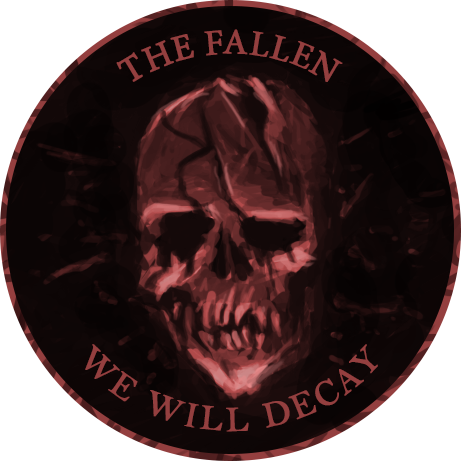

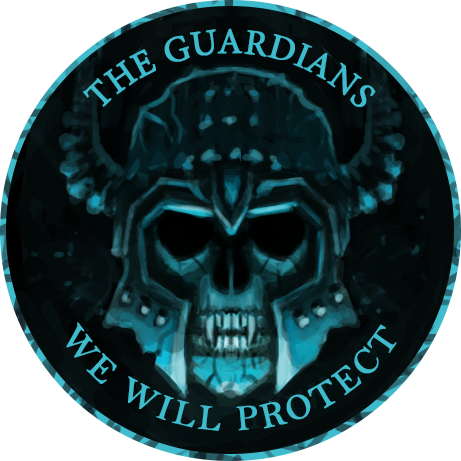
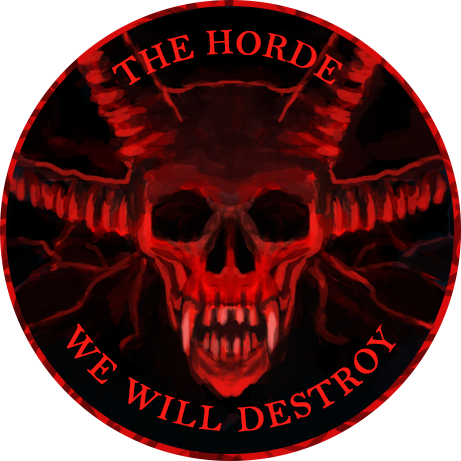
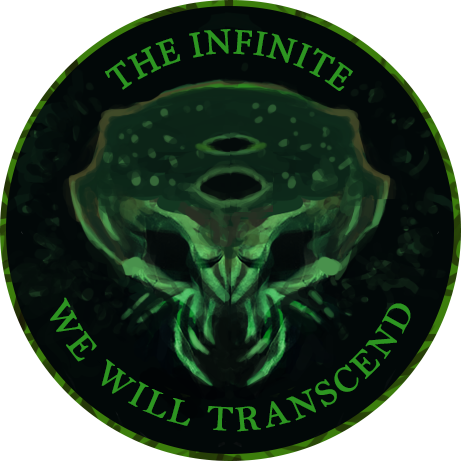

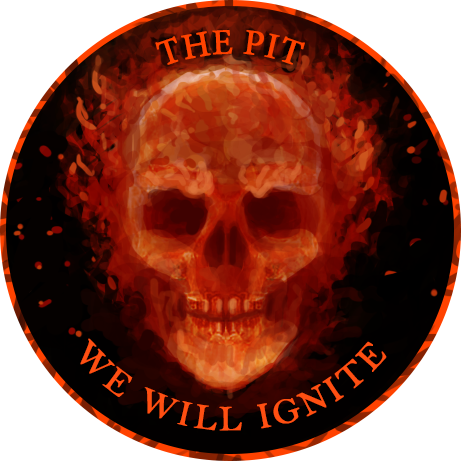

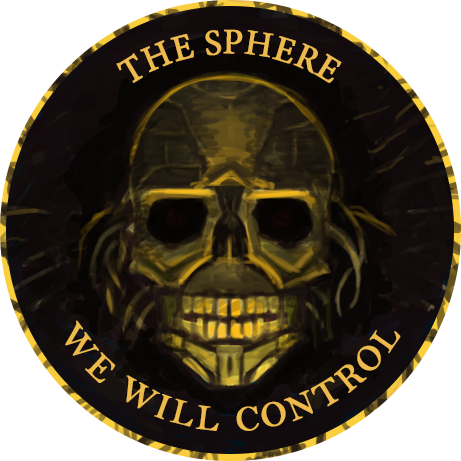
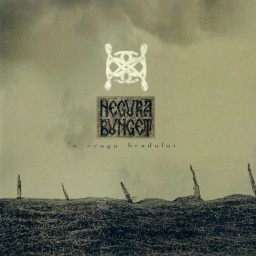
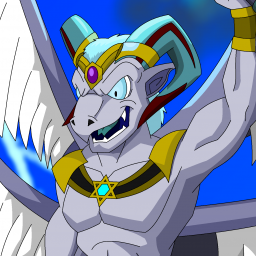 Rexorcist
Rexorcist



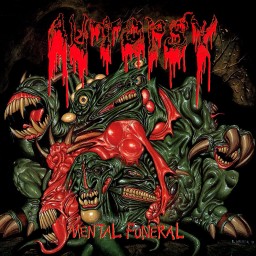
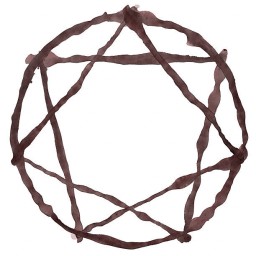 luajaz
luajaz
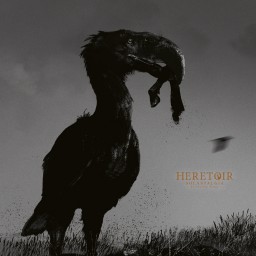
 Saxy S
Saxy S

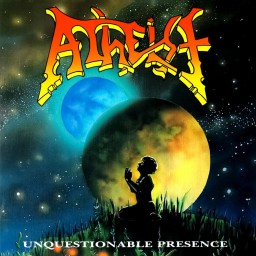
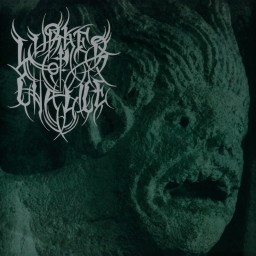

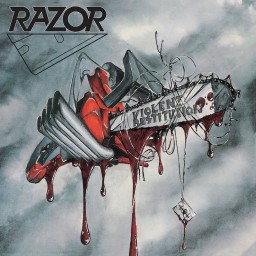
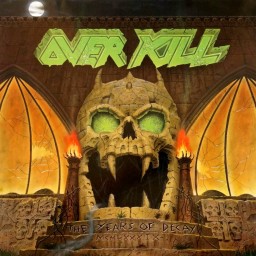

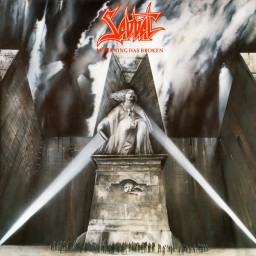
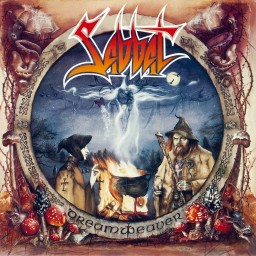
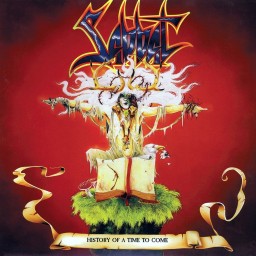


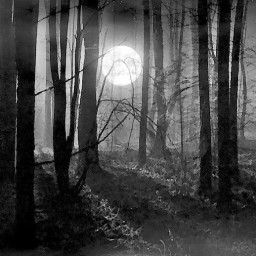 Sonny
Sonny
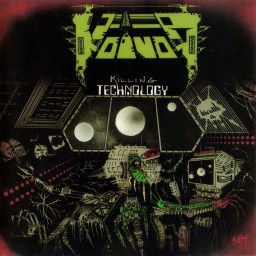
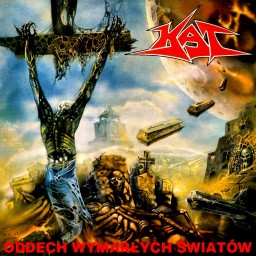


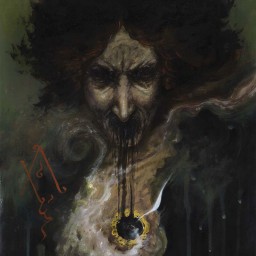 Vinny
Vinny



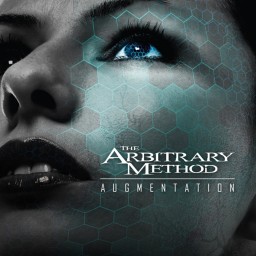
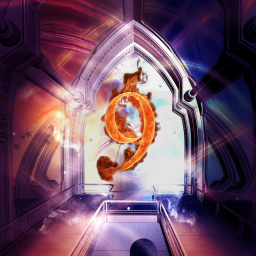 Shadowdoom9 (Andi)
Shadowdoom9 (Andi)

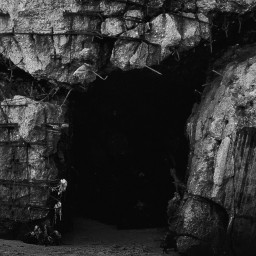

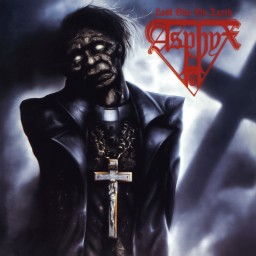
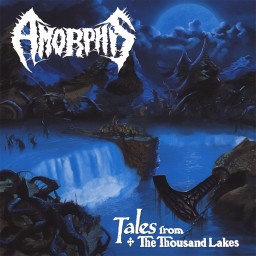
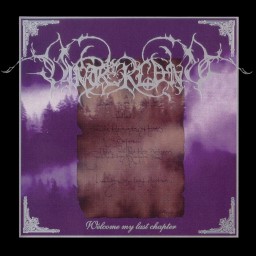
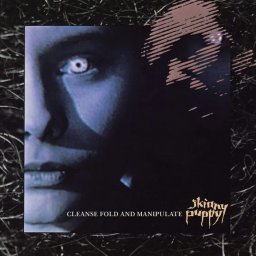 silentsteps
silentsteps

